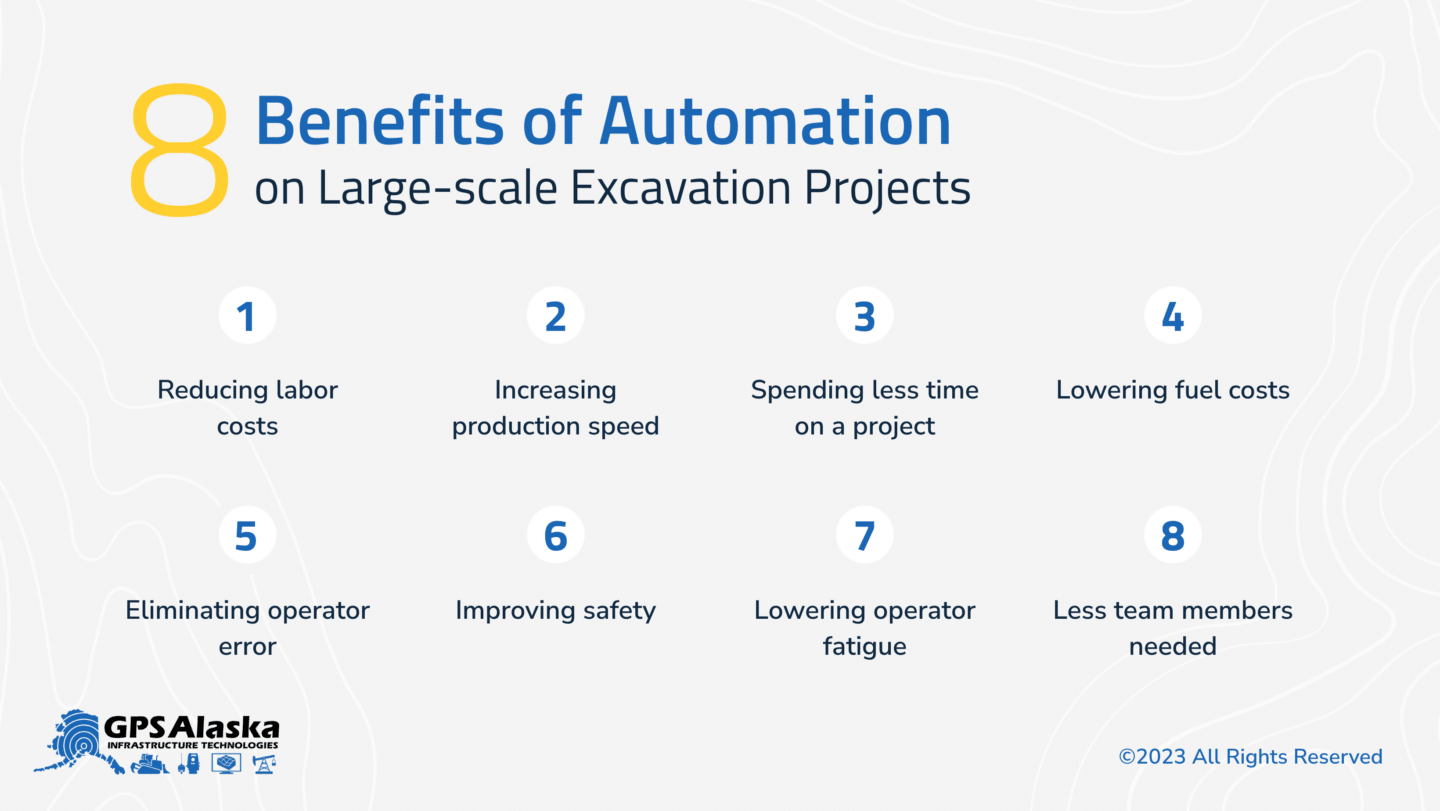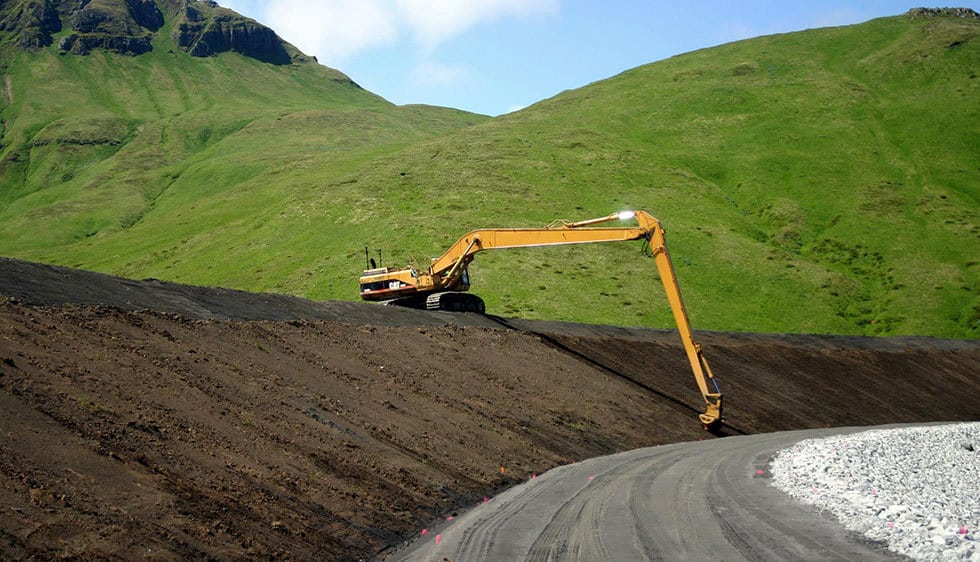The modern construction world is nothing like it was 20 years ago. In fact, even in the last decade, there have been huge shifts toward automation in many areas. However, despite these advancements, the construction industry remains the least automated in the world.
While contractors of the past used to rely on the experience and judgment of their team in order to stay on target with project completion, today we have tools that take human error out of the equation and boost efficiency on many jobs, particularly on civil construction projects. And one of these tools comes in the form of machine control systems.
But what are machine control systems and how can they boost efficiency in large-scale construction projects? In the following, we’ll unpack all the details you need to know about this game-changing advancement in construction technology.
Could machine control products help improve your team’s efficiency? Contact GPS Alaska today to see how we can help.
What Are Machine Control Products and How Do They Work?
Precision is critical in the construction process. After all, the less precise you or your operator are, the longer you’ll spend on the job and the less money you’ll make as a contractor. Machine control systems in excavation essentially offer construction teams much more precise control over any earthmoving project while improving productivity.
Machine control products are implemented by taking construction plans or blueprints, digitizing the plans, and enabling computer control, thus enabling a company to control the cutting edge of the machine – ensuring that it’s precisely where it needs to be.
Essentially, as the operator makes passes, the computer is controlling the cutting edge of the machine – eliminating the need to reset and make another pass. So, whereas the operator would have typically to take multiple passes to get to the appropriate grade, the computer can get to the appropriate grade in one or two passes – eliminating human error and improving overall cost.
In addition, for machine control to function properly, it has to have some sort of base positioning system, including GPS, GNSS, or an optical system such as a total station in order to have elevation alignment – whether it’s a system being used on an excavator, dozer, grader, or any other machine used in excavation.
How Does Machine Control Improve Efficiency on Large-Scale Excavation Projects?

Many businesses are afraid of automation because it breaks with tradition and places the task in the “hands” of a computer. But we’ve seen more and more evidence that automated systems simply make much more economic sense – and that they can help a contractor save both time and money.
According to Michael Williams of GPS Alaska, “The longer a contractor is on a job, the less money he’s going to make,” he says.
For example, as mentioned, using a grader in the traditional way, a human operator may take as many as five passes or more to cut a surface to the appropriate grade. Surveyors would also come around and place hubs and stakes. The operator then has to control the blade slope, the elevation, and where the blade is oriented. But with machine control, all he has to do is drive the machine and allow the computer to control the blade position.
A few ways machine control systems improve the construction process include:
- Reducing labor costs
- Increasing production speed
- Spending less time on a project
- Lowering fuel costs
- Eliminating operator error
- Improving safety
- Lowering operator fatigue
In addition, when you’re digging manually, you have to have someone (a grade checker) tell you what your elevation is. By automating the system, you no longer have the need for the extra person, thus eliminating hourly wages and safety concerns for him being hit with the excavator – or worse. You’re also not waiting for information to be relayed from the grade checker.
At the end of the day, on a basic road realignment or other large-scale civil construction projects, automating heavy equipment can get that project done twice as fast as it could be done manually.
Types of Machine Control Products
Here at GPS Alaska, we know how tough working on a large-scale project in the extreme environment of Alaska can be. This is why we offer the best automation tools and machine control products for your needs.
A few of our top-rated machine control systems include:
- MC-MAX Dozer – high-productivity solution for a variety of earthmoving needs
- mmGPS Grader–combines GNSS technology and land-based lasers for millimeter accuracy
- MC-Max Excavator – for finishing grades at higher speeds with tighter tolerances
- P32 Paving System–for improving accuracy, material thickness, and smoothness
Though each machine control system is different and, like anything, requires training to use, the only real limitation would be the lack of trust that a team has in using the technology. But this is often the case with any new technology. However, adopting automation will only improve productivity and make your team much more efficient.
And if cost is a consideration, for an average spend of 30,000 to 70,000 dollars, you’re likely to see a complete return on investment from a machine control system after the first job is done.
What is the Future of Machine Control and Automation in the Construction Industry?
While a gloomy machine-controlled world with humans as slaves is so often illustrated through science fiction, this is pretty far from reality. The fact is, automation has helped industries become much more efficient. And even though the construction industry is the largest manufacturing industry in the world, it remains the least automated. At GPS, our goal is to automate construction processes to make your life easier – and put money back in your pocket.
If you look around the country, roads and bridges are in critical need of repair as well as the need for more infrastructure as the population increases. Overall, the goal is to slowly remove human beings from the process, not only for higher efficiency but for lower costs and safer work environments.
In addition, the real push for investment in automation systems like machine control is that we have an approximately 15 trillion-dollar deficit for what the world’s infrastructure needs are predicted to be over the next 20 to 30 years. And there’s no real way to overcome that deficit when it comes to building infrastructure without implementing a new process. Thus, many of the world’s major infrastructure leaders are looking to automation and machine control to help bridge that deficit.
With automation becoming more of an industry standard, you can expect to see more construction sites operating with fewer people over time. And while fully automated construction is a process just in its beginning phase, there are current projects that are operating with total automation, such as some mining projects. As such, introducing and implementing this technology now will only prove to be a cost-effective decision that will improve performance and efficiency for your team.
Are you ready to see how automation and machine control can improve your team’s efficiency? Reach out to GPS Alaska today to see how we can help.

